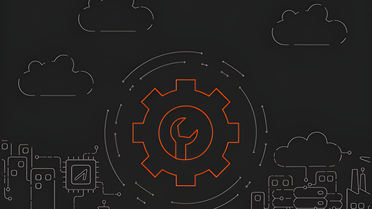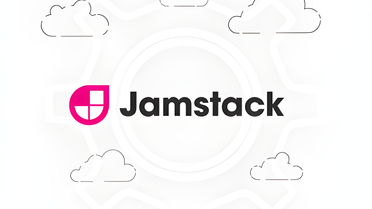Can you recall the last time you used your phone to make a call? Probably not. But do you keep track of how many videos you watch every week? Likely a few a day. Our communication habits have radically transformed in recent years, with advancements in technology leading us to consume more and more data. Today, the bytes consumed are used for online meetings, songs, video streams, games, storage, and this list is set to expand with the advent of 5G networks and the growth of IoT.
Besides the diversification of data consumption methods, access to the network has also broadened. Focusing solely on the mobile device market, the total number of subscribers globally reached 8.4 billion in 2022, with a penetration rate of 106% according to the Ericsson Mobility Report[1], published in the second quarter of 2023. This implies there are more connected cell phones than actual individuals, as the planet’s population hit 8 billion on November 15, 2022, according to United Nations figures.
And these indicators only represent the mobile device market, one among many slices of the total data consumption volume. Taking a broader look at this topic, a study conducted by Statista estimates that, overall, 120 zettabytes of data will be generated in 2023, a 23% increase from the previous year, with expectations to reach 181 zettabytes by 2025[2].
This steep rise in data consumption has reignited the debate about the sharing of investments in network infrastructure. The topic has been around for over 30 years, but it was from the mid-2000s that it began to echo globally, centered on the discussion about network neutrality, a subject we will discuss further in this blog post.
Starting from 2022, a similar but contrasting movement to the traditional understanding of network neutrality was coined as the “Fair Share Proposal” , when 13 of the largest telecommunications companies in Europe came together to propose that big data consumer conglomerates also pay the bill for the infrastructure needed to meet demand. Currently, the proposal is under debate in the European Commission and raises both market and government discussions. This article aims to explain what Fair Share is and what are the benefits and drawbacks of this proposal.
What Is Fair Share?
The concept of Fair Share emerged in the 1990s and initially involved large European internet operators, belonging to associations such as ETNO (European Telecommunications Network Operators) and GSMA (Global System for Mobile Communications Association). This model proposes that proportionate charges be imposed on users with a large volume of outgoing internet traffic (LTG, Large Traffic Generators) and not just the end users who consume this data.
The mechanism suggested by the operators is known as the “Sending Party Network Pays” (SPNP). According to this model, the network that originates the data transmission (be it audio, an image file, or a video stream) must pay a fee to the destination network.
Advantages of Fair Share
According to the members of the Fair Share movement, 57% of all data consumed in the world is in video format and five technology companies (big techs) worldwide foster more than 50% of this consumption[3]. Therefore, the contribution from major network users (known as Over the Top or OTT) would constitute a payment for the necessary performance in networks so that the content reaches end users with adequate quality. As it stands, users only pay for access to services today, not for the low latency demanded by these services.
Based on this design, carriers view themselves as the link between the LTGs and the end users. Thus, they should share infrastructure costs with both sides of the consumption chain, avoiding burdening the end user with costs in network infrastructure investments.
Many advocates for an European legislative reform also consider it an essential tool to achieve the continent’s connectivity goals by 203[4], which requires investments in network infrastructure. Internet operator associations and even governmental institutions fear that, over time, telcos may become gradually unable to improve their services, affecting the quality of the networks. With cost-sharing, this risk would be mitigated.
Disadvantages of Fair Share
Imagine an electricity distribution network. Whether you use the service of the main company in your town or use alternative energy sources, all the electricity that reaches your home is distributed indiscriminately to all your appliances. Your refrigerator, washing machine, electric coffee maker, shower, and even your cell phone charger have different consumptions, but they all receive the same energy. The power company does not place restrictions on the use of any of these devices, for example, stating that you cannot use your shower because it consumes too much, or that you will have to pay a special fee to charge your laptop.
Simply put, this is also the principle of network neutrality. Forged by Columbia professor Tim Wu in 2003, this fundamental principle in discussions about internet governance establishes that service providers should not discriminate, restrict, or privilege certain data packets, ensuring the same access and navigation rights for all users.
Therefore, the institutionalization of Fair Share or any other policy proposing different charges for major network and bandwidth consumers would directly violate the principle of network neutrality. Analysts point out that this would set a dangerous precedent for the future of Internet connectivity.
It is also argued that these immense volumes of data do not circulate freely through the networks of internet operators. In fact, the transport of any and all data sent by OTTs, such as major video streaming services, is paid for by the end users who, by requesting the content, pay for its transfer through their internet subscriptions.
With that in mind, one possible interpretation would be that making OTTs pay for the use of the telecommunications network to send their data could become a way to obtain double payment for the same transport service: both ends of this delivery, OTT and end user, would be charged for making the same transfer.
How Are Investments in Digital Infrastructure Made?
Digital infrastructure and innovation go hand in hand. The market ecosystem is intrinsically complex, requiring high investments in the digital sphere to continually push the boundaries of what technology can achieve. The goal behind these investments goes beyond enhancing existing technological capabilities, aiming to enter new unexplored territories, causing a constant evolution in the expansion of the internet.
At the core of this ecosystem, telecommunications operators play a vital role. They invest not only in maintaining and improving existing telecommunications networks but also in transport network innovations, in the implementation and expansion of submarine cables and satellites, providing increasingly comprehensive connectivity, especially in the last mile.
On the other hand, big techs and other OTTs also focus their efforts on key areas of this ecosystem. Their investments are typically directed towards improving and expanding data centers, long-haul networks (e.g., submarine cables), data security, developing new software and digital products, and finally, in the production and diffusion of content, one of the main demands of internet users worldwide. Their existence, as a vital part of this ecosystem, contributes to the ongoing evolution of the digital landscape as a whole. Thus, it can be said that internet operators and big techs, although with different investment focuses, keep the gears of technological advancement turning.
Commercial Relations Between Telcos and Big Techs
Commercial relations between telcos and big techs are traditionally based on the idea that each company or entity is responsible for its own infrastructure and consequently must bear the related costs: a content provider, for instance, funds the production of its own services as well as its routing through their data centers, networks, CDNs, and any other traffic costs up to the delivery point (or interconnection point) of the service/signal to the telco. The telco, in turn, is responsible for the costs of its own network, including access to the customer.
Therefore, the critical frontier in the current debate is the interconnection point between big techs and telcos: in the existing context, the parties usually negotiate the delivery price of IP traffic and, in the absence of an agreement, the interconnection does not occur. At this point, some telcos allege that it is becoming increasingly difficult to refuse interconnection in cases of unfavorable negotiations, often being forced to provide the service at prices below cost and, in some cases, even for free, whether due to specific local rules about network neutrality, or to be able to support generated demand and deliver the quality required by their customers, and thus not lose these customers to competing providers.
Possible Consequences of Institutionalizing the Fair Share
Although the institutionalization of Fair Share or even its informal adoption as a market practice are still hypothetical scenarios in most of the world, some predictions are already made by important actors for or against the measure.
On one hand, it is argued that the IP interconnection markets could undergo significant changes: some OTTs opposed to Fair Share already openly state that they would choose not to offer their services in countries and territories where the measure was applied, directing them abroad or even to a centralization in “digital tax havens” where this fee is not applied.
Practices like these would result in digital services distant from users, compromising extremely important factors such as quality and security. More importantly, it would require unprecedented investments in long-range network capacity on the part of telcos, possibly making the internet as we know it today unfeasible. Going further, the institutionalization of Fair Share could force big techs to provide access service, altering the current dynamics of the market.
An example of this impact is already observable in South Korea, where a form of Fair Share regulation has been in effect since 2016, leading foreign OTTs to opt for peering abroad, mainly in Japan or Hong Kong, and an unsustainable price for providers to operate within South Korea. The result? Fewer digital services available, less innovation, and lower quality of service.
In addition, the establishment of peering could become more complex, due to the peculiarities of the administrative accounting of traffic inherent to the Fair Share model, destabilizing a market in which contracts for traffic exchange are usually established simply or even verbally. Choices about interconnection modalities would no longer be exclusively technical, i.e., motivated by commercial, technological, and security interests, as they would have to adapt to a possible Fair Share regulation. This could, among other effects, drastically distort competition.
Among the possible solutions, it is often suggested that, from the institutionalization of Fair Share, specific investment and innovation funds (focusing, for example, on fiber optic networks and 5G) be created for the direction of resources resulting from a possible taxation. There are many entities committed to universalizing internet access that could benefit from these funds, such as FUST (Universal Telecommunications Service Fund, Fundo de Universalização dos Serviços de Telecomunicações, in Portuguese), which promotes in Brazil, “the stimulation of the expansion, use and improvement of the quality of telecommunications networks and services, the reduction of regional inequalities, and the stimulation of the use and development of new connectivity technologies for the promotion of economic and social development”.
Conclusions
In summary, Fair Share is still a complex and controversial topic in the panorama of internet governance, and there are valid arguments from both sides of this discussion. On one hand, telecommunications operators significantly contribute to the development of essential infrastructure that enables data transfer, a significant investment effort that some argue should be shared more equitably.
However, there is the fundamental imperative of network neutrality that ensures that all users—and why not digital service providers—have equal and non-discriminatory access to the Internet, a principle that could be violated by the intended models of Fair Share. At this moment, the most important thing is to find a path that is socially and economically sustainable and preserves network neutrality. What are your thoughts on this discussion?
References
[1] Ericsson Mobility Report, 2023 | Ericsson
[2] Volume of data/information created, captured, copied, and consumed worldwide from 2010 to 2020, with forecasts from 2021 to 2025 | Statista
[3] Fair Share | Fair Share Initiative
[4] Europe’s Digital Decade: digital targets for 2030 | European Comission







